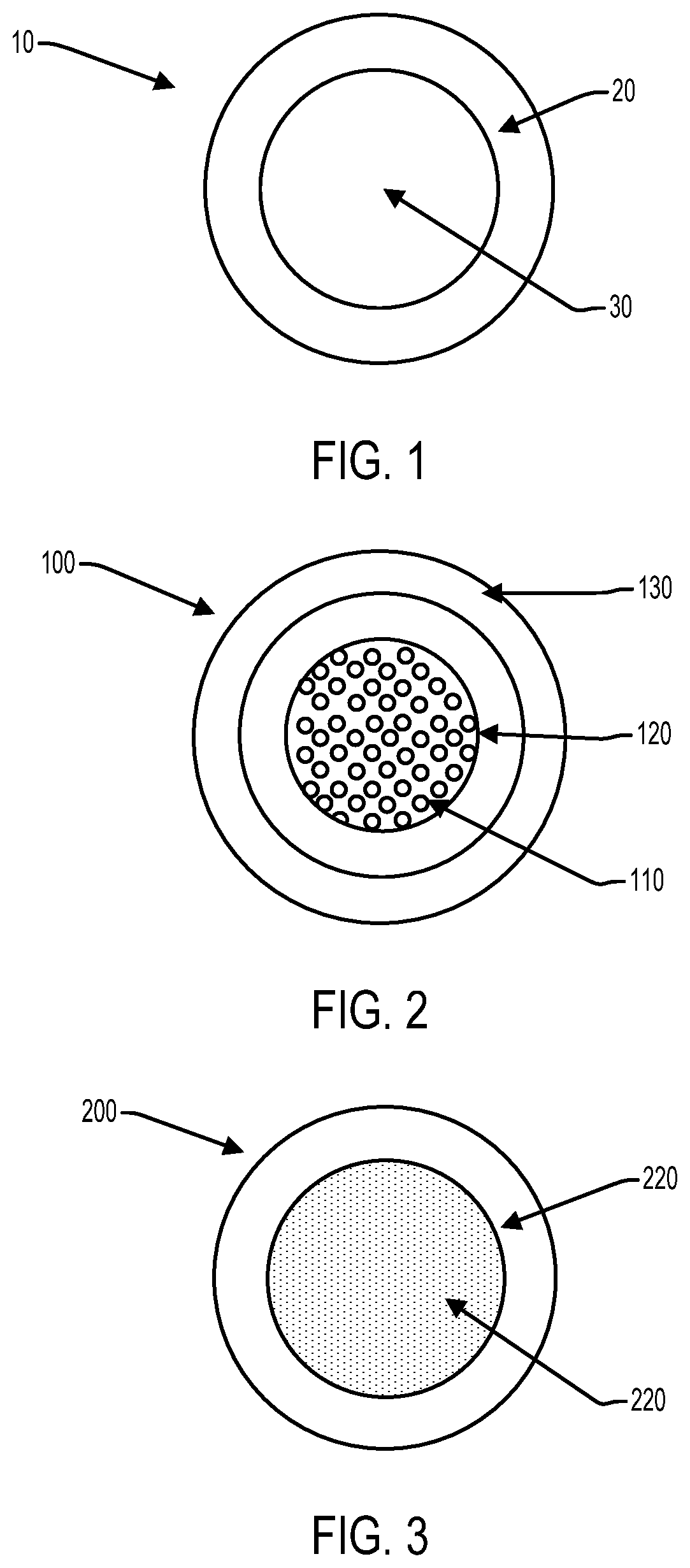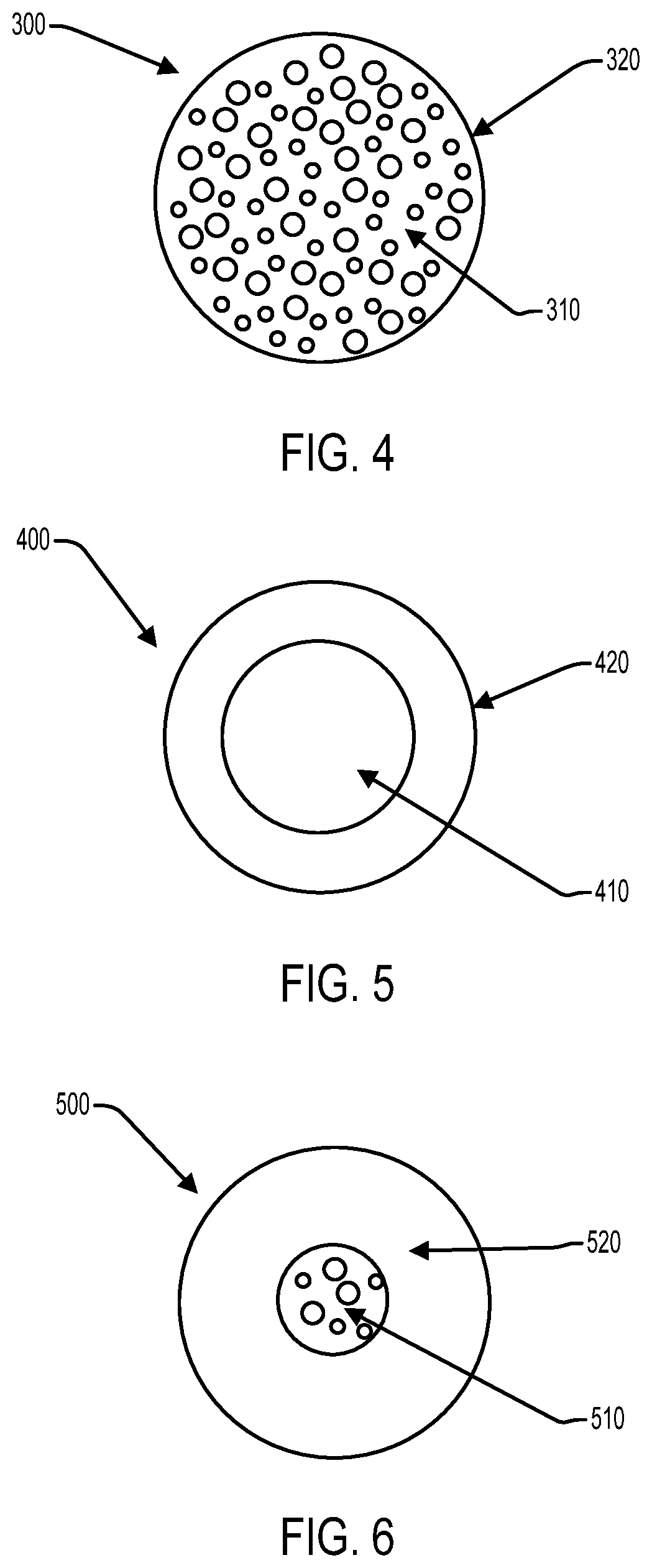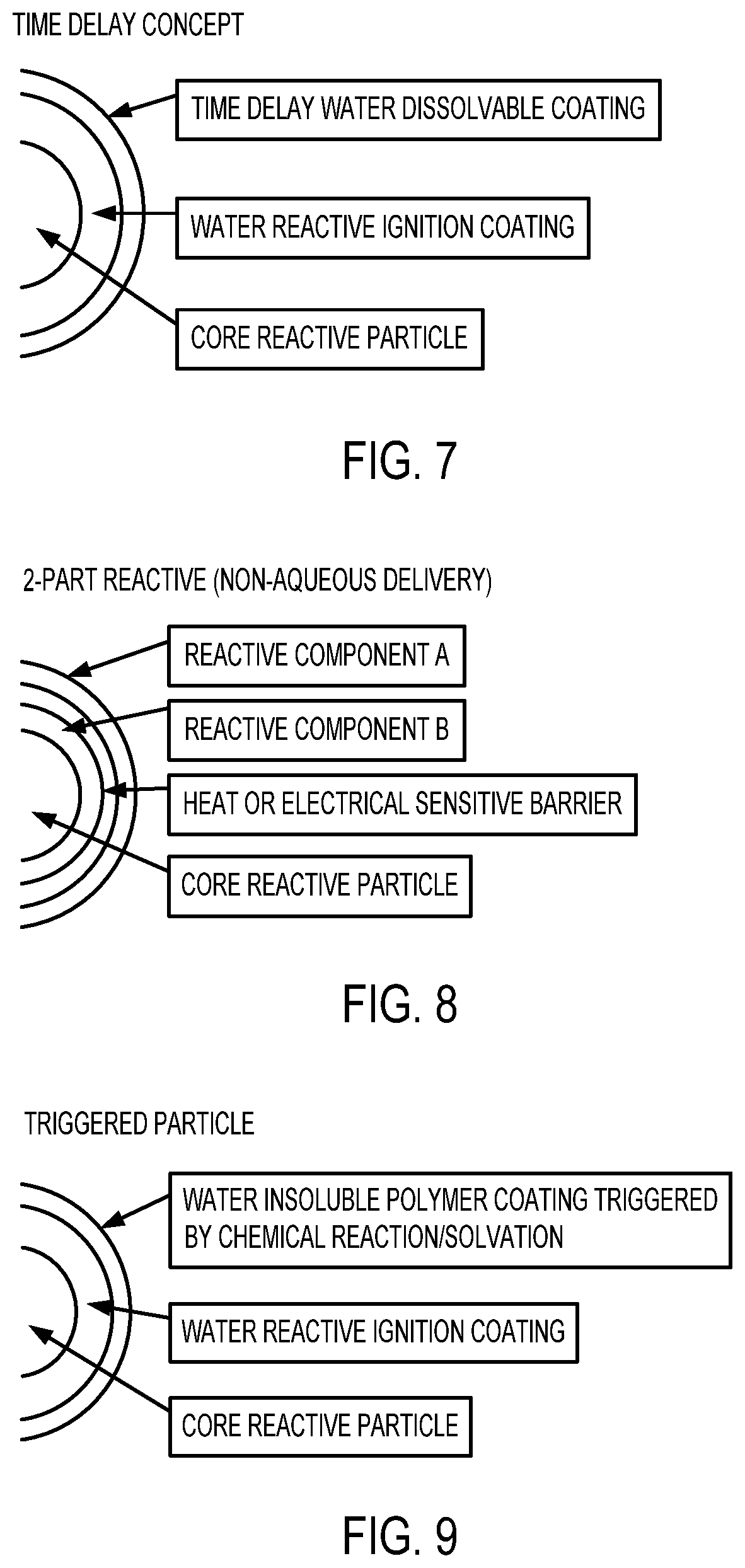Material and method of controlled energy deposition
a technology of controlled energy deposition and material, applied in the field of reactive composites, can solve the problems of adversely increasing the density of the fracturing fluid, reducing the life of the equipment, and conventional fracturing fluid in the fracking operation, and achieves enhanced oil and gas recovery operations, high energy density, and high strength.
- Summary
- Abstract
- Description
- Claims
- Application Information
AI Technical Summary
Benefits of technology
Problems solved by technology
Method used
Image
Examples
example 1
[0125]Magnesium alloy powder containing nickel, iron, carbon, copper, cobalt, galvanic activators and / or dopants and having a particle size distribution of 0.5-10 microns is compounded in a mixing extruder with PVA at a concentration of 60 vol. %. The material is extruded into strands having a cross-section of 300 microns and chopped into roughly equiaxed particles in circulating oil. The particles are further coated with 10 microns of PVA using the evaporation of PVA in isopropyl alcohol. The resultant reactive composite is reactive with brine to generate local gas formation and energy release after a 30 minute delay after 50° C. exposure.
example 2
[0126]Calcium metal is milled with PVA resin in isopropanol in a high energy mill. The isopropyl alcohol is evaporated and the PVA-coated fine calcium powder is mixed with additional PVA resin and extruded in a compounding extruder into 300 micron strands, which are chopped under oil into approximately equiaxed particles. A one-micron coating of PGA is added to the surface of the particles. The resultant particles react over a 10-15 minute period after a 5-minute delay in 55° C. brine.
example 3
[0127]Magnesium powder is dry-milled under inert atmosphere with about 10-60 vol. % of 1-3 microns carbonyl iron powder (a composite of iron and carbon) and a small amount of AlCl3 solid acid in isopropyl alcohol with PVA and stearic acid organic to produce a composite powder blend. The milled magnesium-iron-AlCl3—PVA blend is granulated to form 0.2-0.5 mm reactive beads. The beads react with water to form H2 and MgOH over a 3-20 minute period.
PUM
| Property | Measurement | Unit |
|---|---|---|
| temperatures | aaaaa | aaaaa |
| particle size | aaaaa | aaaaa |
| temperatures | aaaaa | aaaaa |
Abstract
Description
Claims
Application Information
 Login to View More
Login to View More - R&D
- Intellectual Property
- Life Sciences
- Materials
- Tech Scout
- Unparalleled Data Quality
- Higher Quality Content
- 60% Fewer Hallucinations
Browse by: Latest US Patents, China's latest patents, Technical Efficacy Thesaurus, Application Domain, Technology Topic, Popular Technical Reports.
© 2025 PatSnap. All rights reserved.Legal|Privacy policy|Modern Slavery Act Transparency Statement|Sitemap|About US| Contact US: help@patsnap.com



